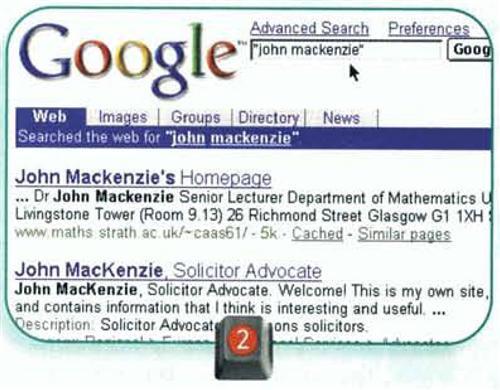Still getting thousands of irrelevant hits? Here’s a quick lesson in search-engine math.

1. First, choose a search engine, such as Google <www.google.com>, and search on just your ancestor’s name (for example, john mackenzie). The search engine will find any page with the words john and mackenzie. In this case, Google found 1,260,000 pages — way too many to wade through.
2. Next, try putting quotation marks around your ancestor’s name: “john mackenzie.” This time, Google turns up 19,600 pages in which the words john and mackenzie appear side-by-side.
3. Now add a search term that’s relevant to your ancestor’s life, such as the state where he lived: “john mackenzie” and massachusetts or “john mackenzie” +massachusetts. The plus sign (+) or word and tells the search engine to return only the matches for “john mackenzie” that also include massachusetts. That’s 398 pages, a much more manageable number than 1,260,000.
Narrow your search even further by using the minus sign, which tells the search engine to exclude a specific word. Let’s say you want to exclude all pages that refer to Maine. Using our example, you’d type “john mackenzie” +massachusetts -maine into the search engine. Voila! Only 279 hits.
4. You also can experiment with the operators or and near. Use or if you want the search engine to find Web pages in which either of two words appears. Use near to find pages in which your search terms appear near one another.







